Being one of the most decorative and widely cultivated species of lilly pilly, Syzygium luehmannii has stood the test of time and is a popular pick for those looking for a versatile and exceedingly ornamental slender tree that doesn’t require a lot of hassle.
This perky native plant can also be grown as a large shrub so it can offer growers both ornamental and practical applications in their landscapes. Here is your complete guide to growing and caring for this celebrated lilly pilly tree.
More...
Genus: | Syzygium |
|---|---|
Species: | S. luehmannii |
Family: | Myrtaceae |
Common Names: | Riberry, Small leaved lilly pilly |
Location: | Outdoor |
Type: | Small tree, large shrub |
Growth: | 3 to 15 metres tall, 3 to 8 metres wide |
Sun requirements: | Full sun to partial shade |
Foliage Colour: | Green |
Flower Colour: | White |
Flowering: | Spring to summer |
Fruit: | Edible berries after flowering |
Maintenance level: | Low |
Poisonous for pets: | Non-toxic to cats and dogs |
Syzygium luehmannii Plant Details
Popularised for its vibrantly colourful pink and purple new growth, tender glossy-green foliage and its abundant production of creamy-white fluffy flowers and decorative bright-pink edible fruits, Syzygium luehmannii is a lovely lively addition to any Australian garden.
The fruits, known as riberries, have long been considered valuable bush food, making this plant a popular bush tucker that bears some of the tastiest fruits of all Australian Syzygium species.
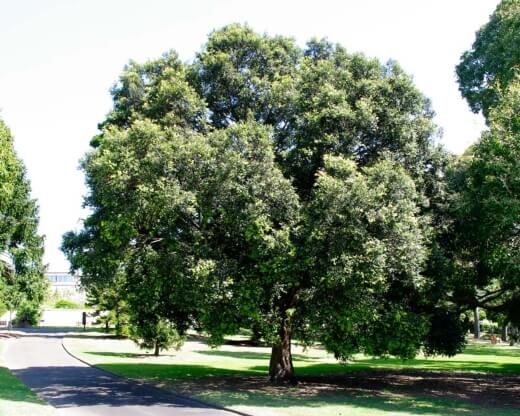
Source: gardensonline.com.au
Part of the Myrtaceae family, Syzygium luehmannii is an evergreen rainforest tree native to the Australian riverine and the subtropical and tropical rainforests of northern New South Wales and southern Queensland.
Commonly known as small-leaved lilly pilly or riberry (thanks to its popular fruits), this plant used to be called Eugenia until it was reclassified by botanists and now falls under the Syzygium or Acmena genus.
Being well-adjusted to our endemic climates, this tree can thrive in most regions across the country. Considered fast-growing and low-maintenance, small-leaved lilly pilly can reach up to 30 meters in its natural habitat but usually only grows to around 8 to 10 metres tall and 5 metres wide in cultivation.
This plant responds well to being pruned to size and shape, making it an excellent choice as a feature plant, formal hedging or screening plant or used for topiary projects in the garden.
Widely used for its prolific production, attractive foliage, gentle weeping and canopying habit, this hardy tree lends itself perfectly to both native rainforest-themed gardens and more orthodox outdoor settings. Also, a great option for shady gardens.
The trunk is smooth and grey with a variegated appearance. For much of the year, soft pink hues will burst from your tree while the new growth develops which will attract bees, birds, butterflies and some smaller mammals.
Foliage makes for excellent filler in cut flower arrangements and the fruits of this specific species are considered very tasty and nutritious with many applications in the kitchen.
How to Grow Small Leaved Lilly Pilly
Young and healthy true to type plants can be purchased from reputable nurseries, garden centres or online stores and transplanted quickly into your garden.
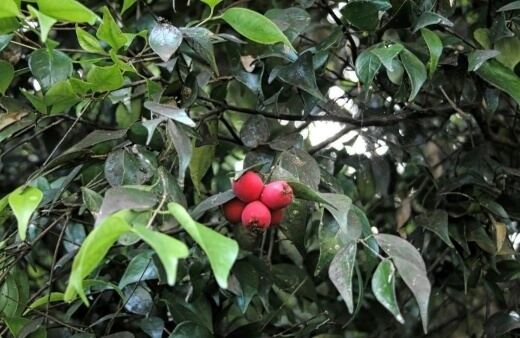
Alternatively, these plants can strike readily from soft or semi-hardwood cuttings. It is possible but not recommended to grow using seeds as this has been known to be a more unreliable method of propagation.
If you wish to try growing from seeds, collect the seeds from the fruits in late autumn. Each berry should contain one seed. Dry and store them. Sow seeds the following spring.
Propagating Riberry Using Cuttings
Soft-wood or semi-hardwood cuttings can be taken from the current season’s growth and rooted in spring when the warmer months lay ahead.
- Using clean and sharpened garden shears, take a 20cm long cutting from a healthy stem of your parent plant. If you don't have garden shears in hand, see our review for the best garden shears available in Australia here.
- Your cutting should have at least two or more leaf nodes or buds.
- After taking your cutting, let it dry. Once dried, you can dip the planting end of the cutting into some rooting hormone.
- Prepare a well-draining container filled with quality rich potting mix. Gently place your cutting into the soil.
- Water well and place in a warm and sheltered location that gets bright but indirect light throughout the day.
- Keep your soil moist and new roots and leaves should develop in around 4 to 8 weeks.
- Allow your cutting to develop for a few more months before transplanting it into the garden.
Be sure to have a look at our helpful guide for more detailed information on how to take cuttings.
Growing Syzygium luehmannii
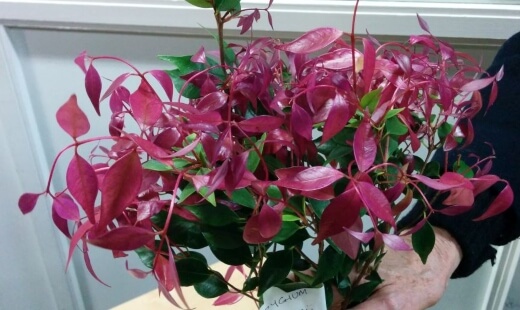
Source: apsyarrayarra.org.au
Syzygium luehmannii should grow almost anywhere in the garden as long as extreme cold and frost are avoided, especially during establishment.
Once established, the riberry will be lightly tolerant to frost and have some resistance to drought. Being native to rainforests, this tree will naturally thrive and grow best given certain conditions.
Light Needs for Small Leaved Lilly Pilly
Can grow in full sun to partly shaded positions. Half sun and half shade during the day seems to allow for healthy, dense growth. A great option for shady gardens.
Best Soil for Growing
Syzygium prefers rich, well-draining soil that holds moderate moisture but they can survive in poorer soils as well.
Ideal Temperature & Humidity
Normal garden humidity should be good enough but it is recommended to mulch these trees regularly to improve soil moisture, especially during hot and dry spells.
Syzygium luehmannii can survive temperatures down to 0°C, just not for an overly long period. Also lightly frost tolerant but not during establishment so your plant could need a little protection during winter in its early development.
How to Plant Syzygium luehmannii

Source: ppnn.org.au
Garden Planting
- Choose a spot in your garden that gets almost equal parts full sun and part shade.
- If you feel you want to give your soil a little boost, add some compost and peat moss then mix that in with your ground before planting.
- Using a spade or shovel, dig a planting hole that is at least twice as wide and to the same depth as the root ball of your plant.
- Gently remove the plant from its current container and position firmly in your hole.
- Backfill with soil, gently firming it down with your palms.
- Water well after planting to help the roots settle in the soil.
- Keep the soil moist and well-mulched for at least 12 weeks while the plant establishes itself.
Syzygium luehmannii Hedge Planting Tips
- To plant as a hedge, many growers recommend rather digging a trench versus individual planting holes. This will help to keep the hedge in a neat and straight row as it grows.
- After digging, mix your extracted topsoil with some organic compost and peat moss. (Make composting easier by using the best compost bins in our comprehensive product reviews.)
- Also, add a layer of compost and peat moss to your dugout ditch and mix them into the sub-soil.
- Gently place your young plants into the trench, spacing them about 50cm to 1 metre apart. Place them at the same depth as they were when growing in their containers.
- Backfill the trench with your enhanced topsoil and water immediately.
- Keep your soil moist at all times until you start to see healthy development and signs of growth. You can then water less frequently.
(Our previous guidance featured the use of peat/sphagnum moss. However, acknowledging its environmental impact, we've altered our suggestions to emphasize alternative options that are just as effective, if not better. Check out our detailed guide for peat moss and its alternatives.)
Caring for Small Leaved Lilly Pilly
Once established, your tree shouldn’t require much work and should be mostly self-sustainable. A little TLC always goes a long way though. Here are some quick care tips when growing Syzygium luehmannii.
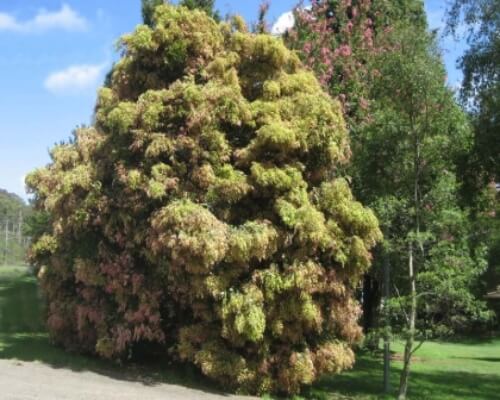
Source: gardensonline.com.au
Mulching
While growing, adding mulch at the base of your tree can be beneficial in maintaining healthy moisture levels in the soil and around your plant.
Try to avoid mulching too close to the trunk. Once established, mulch with an organic mulch like lucerne or pea straw as needed.
Watering Small Leaved Lilly Pilly
Deep and regular watering will be needed during initial growth. Thereafter, water supplementary as needed. Generally, Lilly pilly luehmannii don’t need a lot of water. Sunnier positions will mean more frequent water is needed whereas more shaded positions will mean less watering is needed.
Pruning Riberry
Prune about three times per year for consistent dense growth and splashes of brilliant new foliage growth. You will notice it's time to prune when the foliage becomes leggy with gaps. Tip pruning is recommended when plants are young. For hedge pruning, you can follow the same guidelines.
Check out our review on the best electric hedge trimmers available online.
What Fertiliser to Use
Fertilise with a native slow-release fertiliser in spring to encourage prolific blooming over the growing seasons.
Cleaning
The fruits can be messy and cause the branches to droop as they develop in their bunches. Fallen fruits will also need to be collected and cleaned up after the flowering seasons.
Syzygium luehmannii – Bush Tucker Guide
The fruit, known as a riberry, has been celebrated as gourmet bush food since the early 1980s. This particular lilly pilly tree produces some of the tastiest berries of all Australian Syzygium species so this plant is also cultivated commercially for its uses as a bush tucker.

Source: mdnc.org.au
The berries have a refreshingly tart, spicy cranberry-like flavour with hints of cloves and a crisp fruit texture. They can be eaten fresh straight off the tree but are more commonly used as fruit-based additions to make jams, syrups, sauces or other confectioneries and condiments.
Here are some quick bush tucker tips for riberry:
- Fruits will usually mature and ripen from December to February after flowering.
- They appear as pear-shaped pink berries that turn redder when ripe. Fruits are about 10-15mm long and 5-10mm in diameter, covering a single seed.
- The flesh and skin around the seed of the berry can be eaten.
- When you see your berries are turning red, that means they are ready to be harvested. You can simply pick ripe berries straight from the branches of your tree.
- After picking, the berries will need to be washed and refrigerated or frozen as soon as possible.
- They will keep in the fridge for up to 3 weeks and in the freezer for up to 2 years.
- Place berries in plastic, air-tight bags for storage.
- Before cooking or eating the berries, you can rinse them in water to remove any debris or dirt.
- There is not much information available regarding the health benefits of eating these fruits but it is said that they contain a few useful antioxidants and other vitamins that can reduce inflammation and boost the immune system.
There are plenty of tasty and useful recipes available online that cater to both savoury and sweet meals so be sure to have a look and see what might interest you and your family.
Small Leaved Lilly Pilly Pests, Problems & Diseases
This particular species is known to be quite resistant and not prone to many of the issues that plague other varieties of lilly pilly. Things like psyllids shouldn’t be a problem for Syzygium luehmannii.
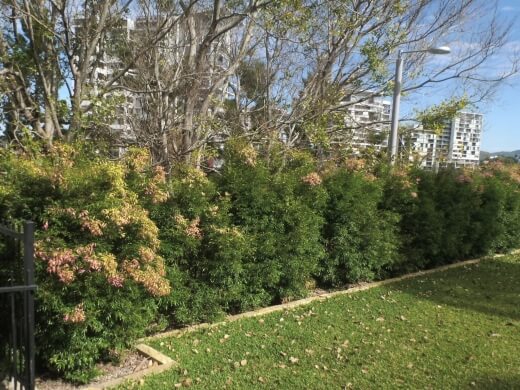
Source: gardeningwithangus.com.au
Unfortunately, an inherent problem your tree could suffer from is myrtle rust which, since around 2010, has been a severe issue affecting many of our local plants in the Myrtaceae family.
Myrtle Rust
Myrtle rust is a fungal disease that starts as purple spots on the leaves that turn to yellow spores as the infection ages. If the spots turn grey, that means your plant has been suffering for some time and will most likely not survive.
Mild cases can be treated with specific fungicides available for the control and further prevention of myrtle rust. Be sure to consult with professionals in your area for the best products to use.
In severe cases of infection, you will need to remove and destroy any infected plants to stop the rust from spreading to other plants in your garden. Be sure to also clean your equipment after removal.
Syzygium luehmannii Frequently Asked Questions
What is the lifespan of a Lilly Pilly tree?
Approximately 20 years or more depending on the conditions. Trees will take around 3 to 5 years to fully mature.
Are Syzygium roots invasive?
The roots are considered non-invasive but they can grow deep into the soil so be sure to consider any underground piping or sewage lines on your property before choosing a planting location.
Which Lilly Pilly has the best fruit?
Of all 60 or so species of lilly pilly in Australia, the fruits of Syzygium australe are particularly tasty, as are the slightly tarter fruits of the Syzygium luehmannii.
If you’re interested in growing other equally stunning and useful Syzygium species, you can check out our full gardening guides below:
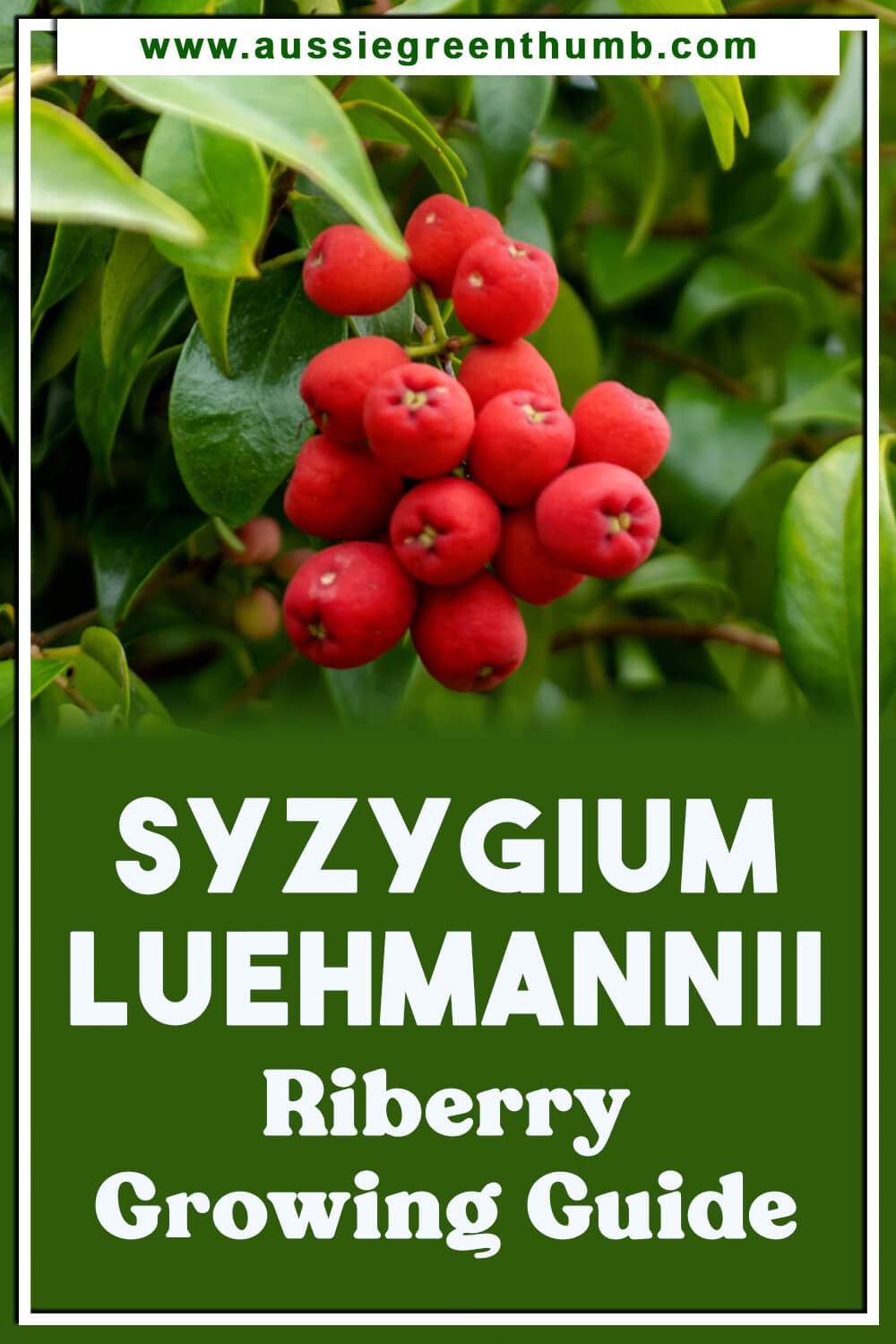
Spruce Up Your Garden with the Ever-Vibrant Syzygium luehmannii
With extensively decorative features and being a native that blooms and fruits prolifically, this small rainforest tree is a perfect pick for any grower looking at sprucing up their gardens with some colour, texture and life.
It’s easy to see why Syzygium luehmannii has become one of the most popular species of lilly pilly tree, being widely planted as an ornamental addition in so many Aussie gardens already.
Published on May 21, 2022 by Lorri Hopkins
Last Updated on April 17, 2024




